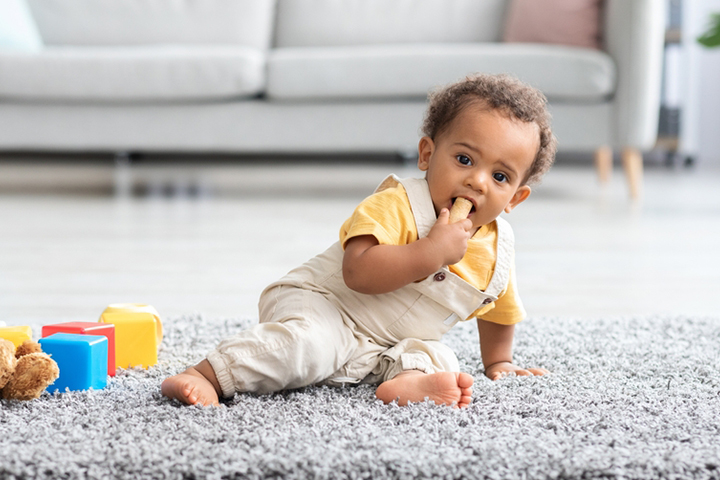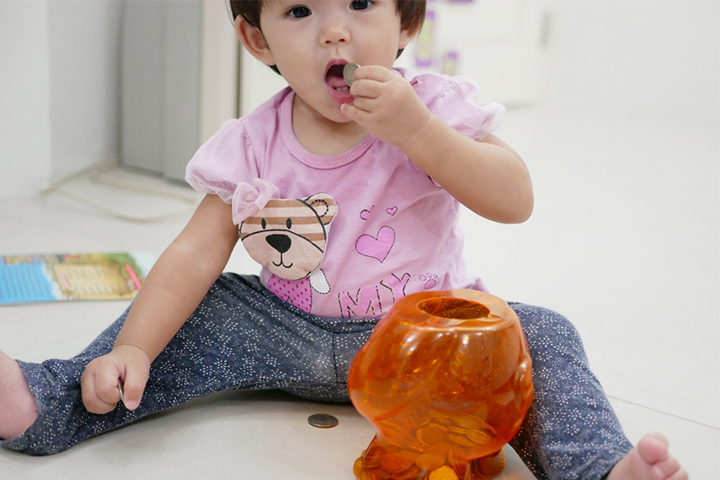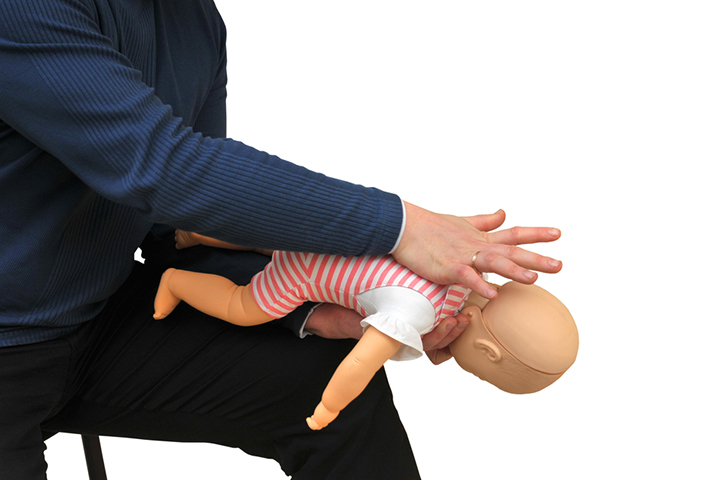
Image: Shutterstock
Every parent’s worst nightmare is putting their child in harm’s way. Since the day you brought your bundle of joy home you’ve probably done everything imaginable to ensure that they are safe, healthy and sound. But unfortunately, it’s physically impossible to think of and baby proof everything that could pose a threat to your baby and sometimes this oversight leads to choking. You’d be surprised how common choking is among babies and toddlers. Which is why in this article we will delve into specific safety tips about common choking hazards, how to prevent your baby from choking, and what you should do if your baby is choking.
What Could Your Baby Be Choking On?
Image: Shutterstock
The first order of business is to figure out what your baby could be choking on. Prevention is always the best remedy so it’s important to take note of what’s in your baby’s immediate environment. As your baby grows, so does their curiosity, which means they will want to touch and taste everything. Here are 3 main things you should be on the lookout for as they might be a potential choking hazard.
1. Food
Image: Shutterstock
Choking has become a major concern over the years as it is the fourth leading cause for unintentional death in children under the age of 5 (1). So it is imperative to keep your little one as safe as possible during snack and meal time. One way to ensure that food is easy for your child to consume is to cut them up into small pieces. Keep in mind that the diameter of your child’s throat is about the diameter of their pinky finger (yes it is that tiny!). So keeping the size of the food small is a great idea. Listed down below are food items that are common choking hazards. They include:
- Corn kernels (cooked or raw)
- Whole nuts and seeds
- Whole cherry or grape tomatoes
- Hard raw vegetables or fruit, such as apple slices or carrots
- Uncut canned fruit
- Uncut, round vegetables or fruit such as grapes, berries, and cherries
- Uncooked, dried fruit, such as raisins
2. Toys
Image: Shutterstock
Here comes culprit number 2. There’s a reason why some toys come with a specific age warning. It’s because toys with smaller parts or detachers that can be easily detached and swallowed are not ideal for babies. For example, a toy that’s made with durable material to get your baby through teething and early toddlerhood is safer than a toy stuffed with batting that has button eyes. With enough wear and tear your baby could choke on the stuffing or end up with a button in their mouth which would be an absolute disaster.
Moreover, there are button batteries that can be found in many toys. These batteries contain dangerous chemicals and can be extremely harmful to your child’s digestive system. Magnets are also something you should be careful of as they can also cause catastrophic damage to a child’s GI tract and can lead to blood poisoning and death. Even more dangerous is if more than one magnet is swallowed, as they can attach to each other and cut off blood supply. Please note that it is considered an emergency if your child ingests a magnet or batteries. Take them to the ER immediately. Listed down below are some common toy choking hazards. They include:
- Legos
- Marbles
- Balloons
- Small toy parts that detach or can easily break off
- Toy stuffing and foam
- Buttons, beads, or other or other decorative items that detach
- Magnets and button batteries
3. Household Items
Image: Shutterstock
Unfortunately, not everything in the house can be kid friendly and that’s perfectly okay as long as they are not within reach. Here are a few harmless tools to keep far far away from your baby’s grabbing hands:
- Screw and nails
- Coins
- Buttons
- Batteries
- Pen caps
- Paperclips
- Thumb tacks and push pins
- Safety pins
What To Do If Your Baby Is Choking ?
As careful as you may be, sometimes accidents happen so it’s always a good idea to be prepared for the worst. Here’s what you do if your baby starts to choke.
1. Baby Face Down
Image: Shutterstock
Place your baby face down on your forearm and rest your forearms on your leg. Now firmly pat their upper back between their shoulder blades. Your goal is to knock the object out of your baby’s airway and this will accomplish that.
2. Baby Chest Up
Image: Shutterstock
Start off by giving your baby around 5 solid pats on the back. Then, turn them over, chest up on your thigh. Relax your baby’s head back (below their chest) and use two fingers to press against their breastbone about five times. Keep repeating these movements and alternating between holding your baby face down and face up until help arrives.
Choking is something to watch out for but there is no use being paranoid. Now that you know what to keep out of reach from your little one, they will be out of harm’s way. Happy parenting!



















